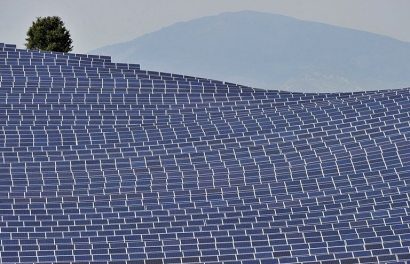The world is facing an unprecedented challenge.
Globally, energy demand is expected to increase by a third over the next two decades, with coal continuing to play a major role in world energy supply.
As the world becomes increasingly reliant on finite fossil fuels for energy, nations are recognising the value of independent sources of energy.
The International Energy Agency predicts that we only have five years to invest in clean energy infrastructure; otherwise we risk locking in temperature rises that will have serious consequences for the planet.
Around the world, we urgently need to use energy more efficiently, and make a significant investment in clean energy supplies.
In Europe, we are starting to see the shift to clean energy. Where fossil fuels once underpinned the energy system, tomorrow’s coal and gas-fired power stations are expected to be used sparingly as back-up for naturally variable renewable energy supplies.
And while some progress is being made, there is significant investment required to transform our energy systems to meet the challenges of security and access, sustainability and economic growth.
To achieve this, we need a vision of a clean energy future shared between energy consumers, clean energy providers, financiers and governments. We need clear, stable and long-term policy frameworks to build and maintain investor confidence. And ultimately, transforming the way we make and use energy requires strong leadership from our governments.
Around the world, governments are responding to the challenge of investing in clean energy infrastructure.
In Germany, Chancellor Merkel has embarked on a program to phase out nuclear power over the coming decade, while maintaining commitments to reducing greenhouse gas emissions by 40 per cent by 2020, and increasing renewable energy generation to 35 per cent.
In Denmark, decisive government policies have resulted in wind energy providing 20 per cent of Denmark’s electricity today, with an ambition of increasing this to 50 per cent by 2020.
While there is a need for governments to develop and implement new policy to drive change, in some situations, government leadership means defending the effective operation of good policies, particularly when these policies are under attack.
In Australia, the Renewable Energy Target is a world-leading policy that efficiently delivers renewable energy projects. Successive governments have embraced this mechanism, which has resulted in $18.5 billion of investment, and stands to deliver a further $30 billion of investment and thousands of jobs.
The RET review has stimulated intense discussion about which policy mechanism is best suited to the Australian market. As a global business we operate in a range of different policy environments for renewable energy, including production credits, feed-in tariffs and certificate schemes. Our experience shows that policy stability is far more important than the detailed design of any scheme.
The International Energy Agency releases its next World Energy Outlook in November. Even the most optimistic among us do not expect to see a significant change to projections of increasing energy demand and fossil fuel use. And when conservative bodies like the International Energy Agency repeatedly call for a revolution in the way we use and supply energy, then we need to pay attention.
Australia has terrific renewable energy resources, a sound policy framework, and a skilled workforce. It is time to leave the policy framework alone and lock in a stable investment climate for clean energy, so that we can get on with building the renewable energy projects needed for a greener tomorrow.
Andreas Nauen is CEO of wind turbine manufacturer Suzlon Group’s REpower Systems SE based in Germany. REpower Australia, the Australian subsidiary of the company, is based in Melbourne, Victoria. Prior to joining REpower, Andreas Nauen was CEO of Siemens Wind Power A/S.







